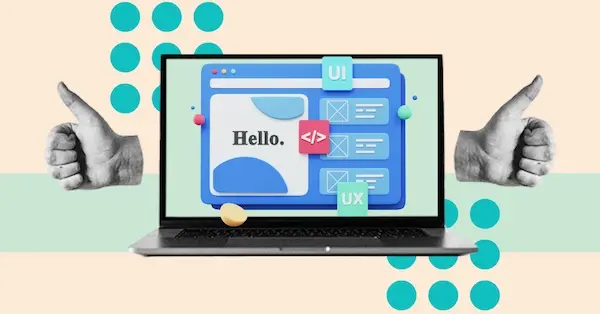Making the most of getting together in person
As the summer draws to a close, many teams will be thinking about coming together for an offsite. The stakes for these gatherings are high. Employee engagement, collaboration and connection have faltered in the last three years of remote and hybrid teams. Even among devotees of remote work, many crave opportunities to meet in person. So if you are going to make the investment of time and money in an offsite, you want it to be great. And over a decade of designing and facilitating numerous offsites and trainings, I have identified these keys to a kick-ass offsite.
Prioritize the experience. Before you plan anything, identify your goals for the session in terms of outcomes and experience. Outcomes may include specific deliverables or outputs, such as a mission statement, vision and values; priorities; decisions and action items. Other outcomes might relate to improving team communication, learning about individual communication styles or building skill around feedback and difficult conversations. Most amateurs prioritize the outcomes and forget to think about the experience. Big mistake. The pros know that at least as important as the outcomes, is the experience—how the participants feel during the offsite and what they take away from their time together. Is the experience coherent or chaotic? Do participants feel valued and empowered? Is there a feeling of connection, of team spirit? Do they leave feeling inspired or demoralized? Ideally, they should leave feeling connected to the team and committed to the actions that will move them forward.
It’s not sufficient to string together a bunch of working sessions and then throw in a “team building activity,” like a cooking class or ropes course, as an afterthought. The entire event—all content and activities—should be designed with both outcomes and experience in mind. And if you have to make trade-offs, prioritize the experience. Ultimately, people will remember the experience more than the output. And in any case, people who are being rushed or who are required to operate in a chaotic or uncaring environment do not produce their best work.
The following are key to creating a great experience for participants:
- Start with empathy. In order to create a powerful experience, you need to understand who your participants are, what they need and what else might be going on for them. Maybe you have someone new to the team, or someone who is jet-lagged, or a parent who left young children at home, or a manager whose team is in the midst of a fire drill. You don’t necessarily need to cater to all the specific needs, but you do need to be mindful and acknowledge that everyone has given up something to be there and each individual is trying to find their place in the group.
- Prime the pump. Asking your participants to do a modest amount of pre-work will immeasurably improve their engagement and output. This could include reading an article, reviewing data, answering a survey or considering prompting questions. Pre-reading, if any, should be targeted and modest.
- Open strong. As the convener, you want to start the experience on the right foot and set the tone and expectations. You will want to welcome the participants, lay out a vision of what you are there to accomplish and place it in the context of the larger mission of the organization. Practice—do not wing it. Another aspect of a strong opening is to get people talking early. Ice breakers are not just for people who don’t know each other, they serve to lubricate the gears of conversation and discussion. Instead of going around the room having everyone answer a prompt, have folks turn to their neighbor to discuss a prompt. The sound of many pairs or trios fills the room with energy and lets everyone know that their voice matters. Then you can ask a few participants to share something that came up with their partners.
- Do less. If you are like most team leaders, you have a long list of things you want to accomplish and you are grossly underestimating how long it will take to tackle each of them. Identify and right-size your key deliverables. Maybe you can’t get a fully formed strategy, but you can identify priorities and key metrics of success and charge a working group with fleshing it out. Be realistic about the complexity and timing of your objectives.
- Weave team-building and connection throughout. Invest early in the building personal connection and discussing “how we work as a team.” For example, if the team engages the topic of communication, leadership style or personality type early on in the session, you can refer back to the relevant insights in later discussions. Even in the most tactical discussions, there are opportunities to build connection and trust. Divide participants into smaller discussion groups, beyond the people they usually interact with. Bring in humor and play. where possible. Give people opportunities to share their personal values, experiences and goals as they relate to the work of the team. Think of every breakout session as an opportunity to strengthen personal connections.
- Mix it up and take breaks. Consider and manage the rhythm of the day to maintain optimal energy. What this looks like in practice is balancing large group discussions with small group interactions and reflective activities, including both listening and talking. It means providing opportunities for people to move around, whether taking a stretching break, having people walk around the room to look at other people’s flip charts, or sending pairs off on a walk-and-talk activity. Pay attention to how activities build and create what experience design expert and founder of Scaling Intimacy School of Experience Design, Jenny Sauer-Klein calls the “dramatic arc.” And always plan a break after the first 60 to 90 minutes and then about every two hours thereafter.
- Know your role. If you are the leader of the group, be aware of your rank and authority and be clear when you are in a facilitative role and when you are acting as an authority or decision-maker. Can you both participate and hold the space for the group to navigate challenging topics or dynamics? Consider hiring a facilitator or asking someone on your team to facilitate if you think your authority will get in the way of being an effective participant or if you are concerned that you may miss important dynamics in the room. Be clear with participants what role you are in (“I was wearing my facilitator hat, but now I am putting on my product manager hat.”)
- Have a clear agenda and time-line—and be ready to adapt. Key to creating a well-integrated experience is having a plan that lays out a flow of activities, structures and breaks, with adequate time for each. But often, a discussion or issue may crop up that is thornier than predicted or generates important conversations. In the event that you see that more time is needed, be intentional and communicate with the group. (Pros anticipate overrun and identify potential places to pare back in advance.)
- Close/integrate. Ending well is at least as important as starting well. How you close the offsite has a huge impact on how the participants will reflect back on the time, so don’t just let the clock expire and everyone scatter. Make sure that everyone is clear about action items, accountability and follow-up. Plan a closing that allows the participants to integrate the experience. For example, you might ask participants to reflect and write down one insight that they are taking away and one action that they are committed to and ask them to share one or both, either with the whole group or in pairs. And finally, as the convener, you have an opportunity to provide a final frame for the experience. You might refer back to the opening and celebrate the accomplishments or the distance traveled or the contributions. Your closing remarks will help participants integrate their learning, make sense of the experience, and leave the space connected to one another and to their purpose.
Credit: Source link











